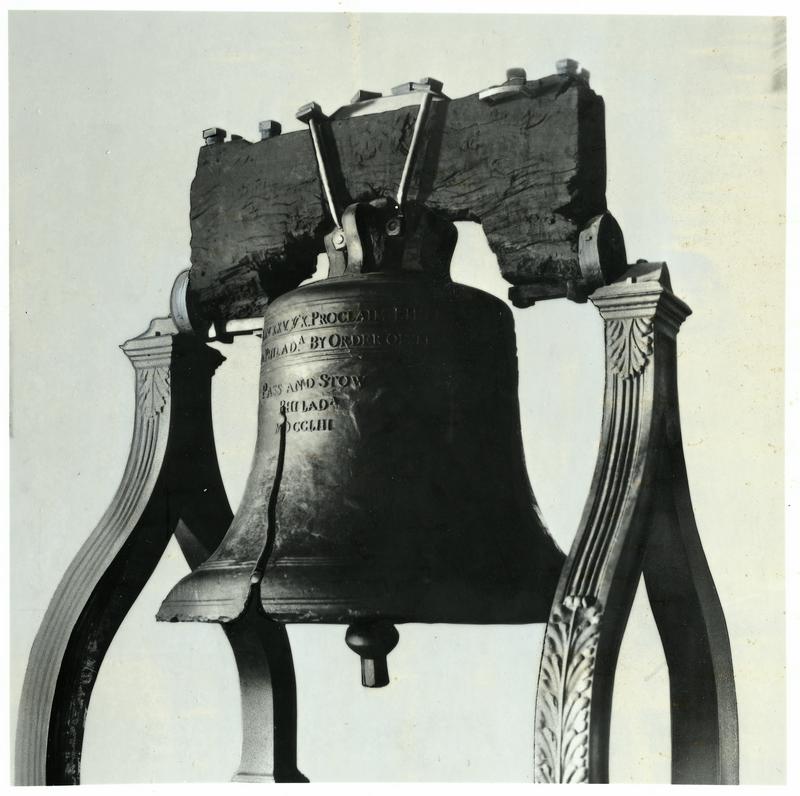The Liberty Bell’s Famous Crack
By | February 27, 2019

The Liberty Bell is one of our most endearing national symbols. However, as every American kid quickly learns, that symbol is broken. The famous bell and its even more famous crack remain an icon of American patriotism and the bell, housed in Philadelphia, is a popular tourist destination. But how did a broken bell become so highly regarded in the first place? Let’s look at the Liberty Bell and its well-known defect.

The Liberty Bell Predates the Founding of the United States
In 1751, the Pennsylvania Provincial Assembly, the region’s colonial governing body, commissioned the Whitechapel Bell Foundry of London to make a large bell to be held in the bell tower of the newly-constructed State House, a building that was later renamed, Independence Hall. They paid the British foundry 100 pounds for the bell, but when it finally arrived in Philadelphia a year later and workers had mounted the bell on a yoke made of American elm and were preparing to hang the two-ton bell, someone suggested they ring the bell to test it out. It cracked.

The Metal Used in the Liberty Bell was Brittle
The foundry that cast the Liberty Bell used a metal composition that proved to be too brittle. A flaw in the metal meant that the force of the ring and the ensuing vibrations caused a fissure to open in the metal…the long crack we see today.

The Bell was Sent Out for Repair
Two local metal workers, John Pass and John Stow, were tasked with melting down and recasting the bell to repair the crack in 1753. They added more copper, but again, the bell cracked. Pass and Stow tried once again to fix the damaged bell, but again the stubborn bell bested them. A small crack appeared that grew bigger over time until it impacted the ring of the bell. After all its repairs, the Liberty Bell contained about 70 percent copper, 25 percent tin, and the remaining 5 percent was made up of small amounts of gold, silver, lead, and zinc. Pass and Stow’s names have been included on the Liberty Bell’s inscription.

The Bell Was Used to Announce Important News
The bell was intended to be used to alert people of important news or announcements, as was customary in the day. On July 8, 1776, the bell was used to beckon people to come hear the first public reading of the Declaration of Independence. A short story about the Liberty Bell was published in 1847. In that story, it was claimed that an old bellringer rang the Liberty Bell on July 4, 1776, after he learned that the Second Continental Congress had voted in favor of American independence. That story was not accurate, however. There was no immediate public announcement of the outcome of the Congress’s vote. Four days later, the bell sounded for the reading of the Declaration, but not before. Still, this short story helped to remind Americans of the notable history of the bell.

The Bell Didn’t Become Known as the Liberty Bell Until the 1830s
In the 1830s, abolitionists seized on the bell as a symbol of freedom and independence. It was then that the bell became widely known as the Liberty Bell. The name was taken from the phrase that was cast on the bell’s exterior, which was taken from the Book of Leviticus in the Bible. It reads, “Proclaim LIBERTY Throughout all the Land unto all the Inhabitants Thereof.” The passage, the abolitionist group claimed, was proof that all people in the United States should be free.

The Final Crack
Two differing legends have emerged regarding the final and permanent crack in the Liberty Bell. One story claims that the final crack occurred in 1835 when the bell was rung during Chief Justice John Marshall’s funeral. While the bell may have tolled at this event, newspaper articles from the time don’t mention it. It could be that the crack grew larger than, but the bell still had one more ring in it. Official records show that, in 1846, the mayor of Philadelphia asked that the Liberty Bell be rung to honor what would have been George Washington’s 114 birthday. The bell rang clearly once and then hit a dull clank as the crack widened. After this event, the Liberty Bell was not repaired or rung again.

The Liberty Bell’s Final Resting Place
The Liberty Bell was placed in a small pavilion outside Independence Hall in 1976 so visitors to Philadelphia for the Bicentennial could see the famous crack. Then, in 2003, the bell was moved to a newly-built visitor’s center, Liberty Bell Center, just outside Independence Hall, where it is seen by millions of visitors every year who look beyond the flaw in the bell to marvel at its place in history.

